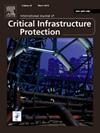SPARK and SAD: Leading-edge deep learning frameworks for robust and effective intrusion detection in SCADA systems
IF 5.3
3区 工程技术
Q1 COMPUTER SCIENCE, INFORMATION SYSTEMS
International Journal of Critical Infrastructure Protection
Pub Date : 2025-03-30
DOI:10.1016/j.ijcip.2025.100759
引用次数: 0
Abstract
Considering SCADA systems operate and manage critical infrastructure and industrial processes, the need for robust intrusion detection systems-IDSs cannot be overemphasized. The complexity of these systems, added to their increased exposure to more sophisticated cyber-attacks, creates significant challenges for continuous, secure operations. Traditional approaches to intrusion detection usually fail to cope, scale, or be as accurate as is necessary when dealing with the modern, multi-faceted problem of an attack vector against SCADA networks and IIoT environments. Past works have generally proposed the use of different machine learning and deep learning anomaly detection strategies to find possible intrusions. While these methods have, in fact, been promising, their effects are not without their own set of problems, including high false positives, poor generalization to new types of attacks, and performance inefficiencies in large-scale data environments. In this work, against this background, two novel IDS models are put forward: SPARK (Scalable Predictive Anomaly Response Kernel) and SAD (Scented Alpine Descent), to further improve the security landscape in SCADA systems. SPARK enables an ensemble-based deep learning framework combining strategic feature extraction with adaptive learning mechanisms for volume data processing at high accuracy and efficiency. This architecture has stringent anomaly detection through a multi-layered deep network adapting to ever-evolving contexts in operational environments, allowing for low latency and high precision in the detections. The SAD model works in concert with SPARK by adopting a synergistic approach that embeds deep learning into anomaly scoring algorithms, enabled to detect subtle attack patterns and further reduce false-positive rates.
SPARK和SAD:在SCADA系统中用于鲁棒和有效入侵检测的前沿深度学习框架
考虑到SCADA系统操作和管理关键基础设施和工业过程,对强大的入侵检测系统(ids)的需求再怎么强调也不为过。这些系统的复杂性,再加上它们越来越容易受到更复杂的网络攻击,为持续、安全的运营带来了重大挑战。传统的入侵检测方法在处理针对SCADA网络和IIoT环境的攻击向量的现代、多方面问题时,通常无法应对、扩展或准确。过去的工作通常提出使用不同的机器学习和深度学习异常检测策略来发现可能的入侵。虽然这些方法实际上很有前途,但它们的效果也存在一些问题,包括误报率高、对新攻击类型的泛化能力差以及在大规模数据环境中的性能低下。在此背景下,本文提出了两种新的入侵检测模型:SPARK (Scalable Predictive Anomaly Response Kernel)和SAD (Scented Alpine Descent),以进一步改善SCADA系统的安全环境。SPARK支持基于集成的深度学习框架,将战略特征提取与自适应学习机制相结合,以高精度和高效率地处理大量数据。该体系结构通过多层深度网络进行严格的异常检测,以适应操作环境中不断变化的上下文,从而实现低延迟和高精度检测。SAD模型通过将深度学习嵌入到异常评分算法中的协同方法与SPARK协同工作,能够检测到微妙的攻击模式,并进一步降低误报率。
本文章由计算机程序翻译,如有差异,请以英文原文为准。
求助全文
约1分钟内获得全文
求助全文
来源期刊

International Journal of Critical Infrastructure Protection
COMPUTER SCIENCE, INFORMATION SYSTEMS-ENGINEERING, MULTIDISCIPLINARY
CiteScore
8.90
自引率
5.60%
发文量
46
审稿时长
>12 weeks
期刊介绍:
The International Journal of Critical Infrastructure Protection (IJCIP) was launched in 2008, with the primary aim of publishing scholarly papers of the highest quality in all areas of critical infrastructure protection. Of particular interest are articles that weave science, technology, law and policy to craft sophisticated yet practical solutions for securing assets in the various critical infrastructure sectors. These critical infrastructure sectors include: information technology, telecommunications, energy, banking and finance, transportation systems, chemicals, critical manufacturing, agriculture and food, defense industrial base, public health and health care, national monuments and icons, drinking water and water treatment systems, commercial facilities, dams, emergency services, nuclear reactors, materials and waste, postal and shipping, and government facilities. Protecting and ensuring the continuity of operation of critical infrastructure assets are vital to national security, public health and safety, economic vitality, and societal wellbeing.
The scope of the journal includes, but is not limited to:
1. Analysis of security challenges that are unique or common to the various infrastructure sectors.
2. Identification of core security principles and techniques that can be applied to critical infrastructure protection.
3. Elucidation of the dependencies and interdependencies existing between infrastructure sectors and techniques for mitigating the devastating effects of cascading failures.
4. Creation of sophisticated, yet practical, solutions, for critical infrastructure protection that involve mathematical, scientific and engineering techniques, economic and social science methods, and/or legal and public policy constructs.
 求助内容:
求助内容: 应助结果提醒方式:
应助结果提醒方式:


